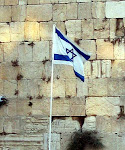By Josh Lichtenstein
Third annual festival honoring city's status as World Heritage Site marked with night of partying. Restaurants, bars, cafés remain open all night, with free concerts and cultural activities across city.
 On Wednesday night Tel Aviv celebrated its third annual “White Night” festival with parties and special events throughout the city. Bars, restaurants, and cultural institutions kept their doors open late into the night creating a vibrant atmosphere across the city.
On Wednesday night Tel Aviv celebrated its third annual “White Night” festival with parties and special events throughout the city. Bars, restaurants, and cultural institutions kept their doors open late into the night creating a vibrant atmosphere across the city. The city has been holding the event for the past three years to celebrate its UNESCO (The United Nations Educational, Scientific and Cultural Organization) status as a World Heritage Site.
Tel Aviv has been recognized around the world for its beautiful Bauhaus style architecture and rich cultural heritage. Lining Rothschild Boulevard and Bialik Street, buildings were illuminated with special lighting. The city offered guided tours of the architecture along Bialik street. The streets were filled with people, many dressed in white, all joining together to party in beautiful Tel Aviv.
So much to see
Throughout Tel Aviv cultural events took place late into the night. Most of the events were free to the public , which allowed more people to take part. In the station complex of the Neve Tzedek neighborhood, the Gesher Theatre company performed selected acts from William Shakespeare's “The Twelfth Night”. In the Sharon Garden of Hahashmal Park, Israeli Opera soloists performed a special concert of Israeli songs accompanied by piano. Elsewhere, the Tel Aviv Opera House presented a midnight showing of a selection of popular operas.
The flea market in Jaffa stayed open late allowing shoppers to wonder through art galleries, restaurants, and cafes. The biggest parties took place along the beach where people danced and partied to the sound of live music and deejays. Mante Ray beach held a huge free party sponsored by Club Med with free music and dancing. Bars and cafes near the water were packed with people. There was an amazing amount of energy in the air with the all the activities going on throughout the city.
Incredible nightlife
Gabriel Rosenberg, a Tel Aviv resident who recently moved to the city, described his first “White Night” experience to Ynet saying, “White night is an unbelievable event where people from all around Tel Aviv can get together and enjoy incredible nightlife and an atmosphere that compares to no other place on earth. Where else can you find so many beautiful people and live music in one place, together with such amazing weather?“
The city of Tel Aviv invested NIS 350,000 (roughly $90,000) in this year's events. Surprisingly, the Florentine neighborhood, which is a major party hub during Purim and Independence Day celebrations, did not hold any events.










